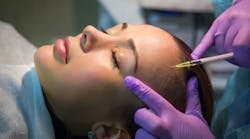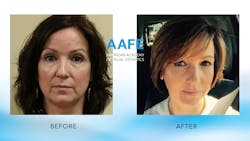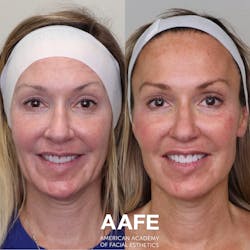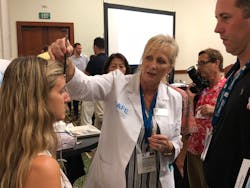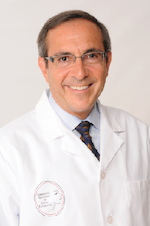Inject some life into your practice's bottom line with these high-ROI services
Data doesn’t lie
HPI has had an ongoing study during the pandemic titled COVID-19: Economic impact on dental practices. This study has been measuring certain parameters week by week throughout the pandemic. Let’s take a look at the latest report as of this writing— the week of June 14th.1 I encourage dentists to look at theIn my previous article, I compared solo practices to DSO practices. In this article, I’ll compare solo practices to a recent survey of American Academy of Facial Esthetics (AAFE) member dentists. AAFE member dentists are reflective of general and specialty dental practices with one addition—these dentists have integrated the use of injectables such as Botox, dermal fillers, and polydioxanone (PDO) threads into their practices. These services are insurance-free and high return on investment (ROI) with minimal treatment time once the clinician is well-trained in their use. Dentists surveyed in the AAFE member study were split between those who have had at least AAFE Level I live patient certification training (AAFE I) and those who have had additional Level II live patient certification training and more (AAFE II).2 This will give us some perspective to better understand how pandemic and post-pandemic economic trends are affecting solo versus AAFE dental practices.
Patient volume
It is mind-boggling to find out that nearly a year after many dental offices were able to open their doors for non-emergency patient treatment, almost 35% of solo practices are still reporting lower patient volume. Contrast this number with dentists who have invested in their skills to add injectables such as Botox to their practice. Here is a statistic that should make you seriously think about the services you offer in your practice: AAFE I member dentist practices are booming with Botox, dermal fillers, PDO threads, and injectable treatments, having increased 2021 year over 2019 year by nearly 40%. AAFE II practices are up nearly 50%, proving that more education results in higher production through treating more comprehensive facial esthetics cases.
Clearly, AAFE I and AAFE II practices are doing a better job at attracting patient volume into their offices during this post-shutdown stage. Why? It has been widely reported that all esthetic dental services have increased post-pandemic, including whitening, esthetic dentistry, and porcelain veneers.3 Why is this happening? We call it the Zoom boom: patients have been isolating for months and practicing social distancing and wearing masks, hiding the most expressiveCombine these reasons with the fact that patients now have more elective money in their pockets from not traveling or doing much of anything for the better part of a year, plus government payouts—these patients now and for the foreseeable future are investing in their own facial esthetics first, before they get back to their normal lifestyles and see their friends, families, and meet new people at social events. Patients want facial esthetic dentistry treatment and they want it now (figures 1–2).
A key advantage
What advantage do AAFE I and AAFE II practices have? These practices offer Botox, dermal fillers, and PDO threads—the most popular esthetic services in the world. These services have proven, once again, to be recession proof. Here are more amazing survey results: AAFE member practices averaged increased production of 3% in 2020 over 2019, which is absolutely a miracle considering all dental practices were closed for a minimum of two months in 2020.2
Botox and dermal filler treatments are some of the safest treatments to deliver during the pandemic (and now) because there are no aerosols involved, all treatment is delivered through disposable, single-use syringes, and the average appointment lasts only 5–30 minutes. Many AAFE member dentists only delivered injectables for the first few months of reopening as patients did not want to come in for regular dental services but they were willing to come in for their facial esthetic treatments.
Here is a question you need to ask yourself: Was your practice production up 3% in 2020 compared to 2019? According to the HPI, most dental services were down 25%-plus in 2020 over 2019. With many practices still experiencing lower patient volume, this trend will continue unless you start adding services people desire and are willing to pay for out-of-pocket.
Highest ROI
Injectable procedures have the highest ROI in a dental office by far, since there’s no lab fee involved, no capital investment, and most cases take just a fewA wise investment
Your single best investment is and always will be you! Botox, fillers, and PDO threads are skills-based services, which means you’ll have these skills forever. The AAFE has trained tens of thousands of dentists in every state to deliver injectables within the scope of dental practice at 40 locations around the US and at the ADA headquarters and ADA annual meeting, including Smilecon 2021 in Las Vegas next month (figure 3). Your patients are investing in themselves by coming in for these elective esthetic treatments. Invest in yourself and get trained today!
Editor's note: This article appeared in the September 2021 print edition of Dental Economics.
References
- COVID-19: Economic impact on dental practices. American Dental Association Health Policy Institute. June 14, 2021. https://tinyurl.com/44sr5ejd
- American Academy of Facial Esthetics internal member study. June 30, 2021.
- Lukas E. Everyone is suddenly getting smile makeovers. InStyle. April 29, 2021. https://www.instyle.com/beauty/porcelain-veneers-dental-trends-coronavirus
